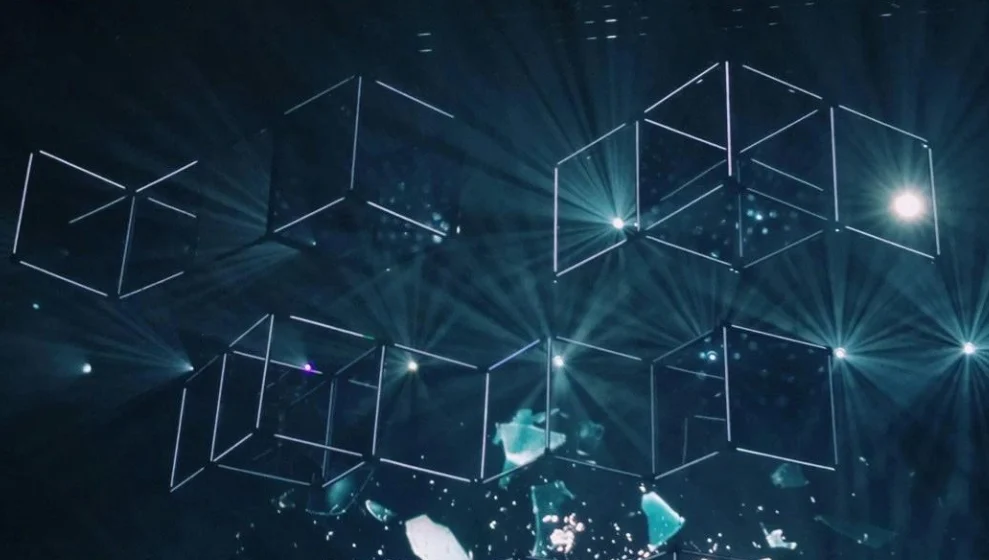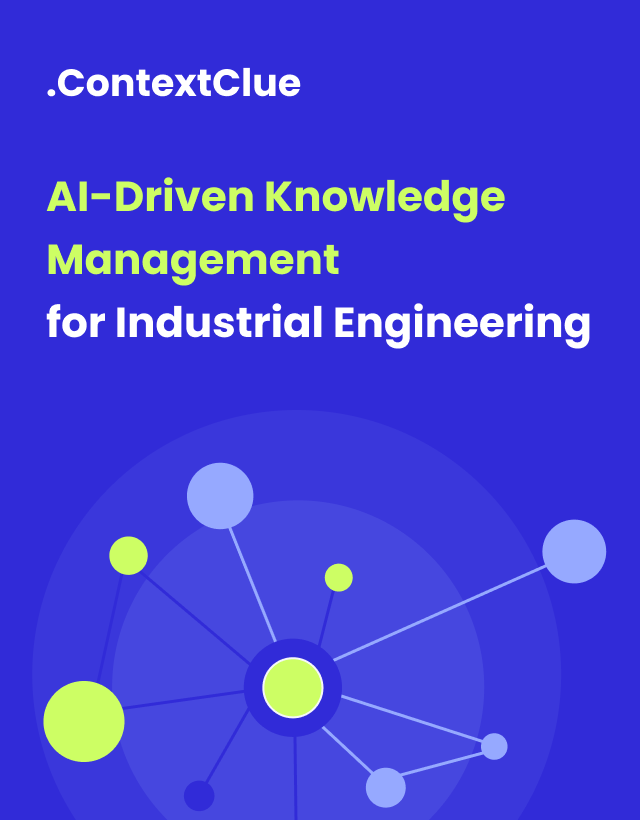
July 28, 2025
AI Agent Ecosystem: A Guide to MCP, A2A, and Agent Communication Protocols
Author:

CEO & Co-Founder
Reading time:
17 minutes
AI agents are opening transformative possibilities across industries, but a foundational question persists: how do these intelligent agents communicate with each other and the external environment? Effective communication protocols form the backbone of any sophisticated AI system, enabling agents to integrate tools, coordinate workflows, and deliver scalable automation, and – among emerging standards – the Model Context Protocol (MCP) has garnered significant attention as a unifying open standard for AI agent integration.
However, MCP is not the only solution in this dynamic landscape. Competing protocols, dedicated developer frameworks, and platform-specific ecosystems add complexity to selecting the right communication approach.
This article offers a comprehensive guide to MCP and its alternatives by categorizing the options, contrasting architectures and use cases, and presenting a practical framework to guide architects and developers in choosing the optimal communication strategy for their AI projects.
Key Takeaways
- No universal solution exists
The AI agent communication landscape offers multiple protocols and frameworks, each optimized for different use cases. Success depends on matching your specific architectural requirements, coordination complexity, and control needs rather than adopting a one-size-fits-all approach. - MCP excels at standardized tool integration
The Model Context Protocol (MCP) shines when you need a single AI agent to interact with multiple external tools and APIs in a standardized, secure manner. It’s particularly valuable for enterprise environments requiring vendor-agnostic solutions and robust access controls. - Agent-to-agent protocols enable true collaboration
Protocols like A2A, ANP, and ACP move beyond simple tool execution to enable sophisticated multi-agent collaboration. These are essential when building systems where autonomous agents must negotiate, delegate tasks, and coordinate complex workflows. - Frameworks vs. protocols serve different layers
MCP and similar protocols act as the “plumbing” for communication, while frameworks like LangChain and Semantic Kernel provide the “machinery” for orchestrating intelligent behavior. Understanding this distinction helps in making architectural decisions. - Platform lock-in vs. flexibility trade-offs
Proprietary solutions (OpenAI plugins, Google Vertex AI) offer polished developer experiences and advanced features but create vendor dependencies. Open standards prioritize interoperability at the cost of potentially more complex implementation. - Hybrid approaches often work best
Real-world implementations frequently combine multiple approaches—using MCP for tool integration, agent-to-agent protocols for collaboration, and frameworks for orchestration—to balance standardization with customization needs. - Security and governance are critical
Enterprise adoption requires robust authentication, access controls, and audit capabilities. Consider these requirements early in your architectural planning, as retrofitting security is significantly more complex.
What is MCP (Model Context Protocol)? A Quick Refresher on AI Tool Integration
The Model Context Protocol (MCP), introduced by Anthropic in late 2024, is an open, vendor-agnostic protocol designed to standardize the way large language models (LLMs) interact with external tools, APIs, and data sources.
At the core of MCP is a client-server model, in which an AI agent operates as the client, issuing secure requests to MCP-compliant servers that expose various tools or capabilities.
The MCP’s primary enterprise use case lies in enabling a single AI agent to interface with a diverse set of tools in a secure and scalable manner.
MCP emphasizes robust access control mechanisms and secure execution, thereby making it particularly suitable for enterprise contexts where compliance, data governance, and interoperability are critical.
Notably, MCP supports interoperability across different LLM vendors, including, but not limited to, OpenAI and Anthropic, thus avoiding vendor lock-in and promoting ecosystem flexibility.
However, MCP has certain limitations. It does not natively support agent-to-agent communication or decentralized, peer-to-peer architectures. As such, in scenarios that require collaboration between multiple autonomous agents or involve highly customized workflows. such as swarm intelligence or distributed decision-making, alternative protocols or agent frameworks may be more appropriate.
Agent-to-Agent (A2A), ANP, and ACP Protocols for Multi-Agent Communication
In contrast to agent-to-tool architectures like MCP, agent-to-agent (A2A) communication protocols enable direct collaboration between autonomous AI agents. These protocols underpin multi-agent systems (MAS) in which agents can negotiate, delegate responsibilities, and coordinate complex, often interdependent workflows. Rather than merely executing isolated tasks, agents in A2A systems engage in dynamic interactions that mirror human team collaboration.
Google’s A2A Protocol: Trust-Based Agent Interoperability
One such protocol is Agent-to-Agent (A2A), developed by Google, which defines a secure and extensible open standard for asynchronous, trust-based communication among AI agents. Built on HTTP(S) and JSON-RPC 2.0, A2A is designed to support long-lived, loosely coupled interactions across heterogeneous systems. Its architecture enables features such as capability discovery, authentication, and task orchestration, allowing, for example, a project management agent to delegate software development and testing activities to specialized coding and QA agents.
Agent Network Protocol (ANP): Decentralized AI Agent Communication
The Agent Network Protocol (ANP) takes this a step further by enabling fully decentralized, peer-to-peer communication among agents. ANP is specifically designed for open, market-like environments, where agents can autonomously discover, negotiate, and transact with one another. This makes it ideal for dynamic service ecosystems, such as digital marketplaces, where agents offer or consume capabilities in real time—negotiating terms, exchanging value, and executing tasks without central coordination.
IBM’s Agent Communication Protocol (ACP): Semantic Multi-Agent Coordination
Meanwhile, Agent Communication Protocol (ACP), a research initiative led by IBM, focuses on structured, semantically-rich dialogue between agents. ACP leverages shared ontologies and contextual awareness to enable high-level communication, particularly in domains requiring coordinated multi-turn exchanges. A typical use case might involve an AI-powered HR onboarding system, where agents representing IT, facilities, compliance, and management interact to autonomously fulfill onboarding requirements for a new employee.
Collectively, these protocols represent a shift toward collaborative, autonomous agent ecosystems, supporting scenarios that go beyond simple tool execution. By enabling agents to reason, negotiate, and coordinate, they open the door to complex workflow automation and scalable distributed intelligence.
Protocol Comparison: MCP vs A2A vs ACP for AI System Design
| Protocol | Architecture | Authentication | Discovery Mechanism | Focus | Best Use Case |
|---|---|---|---|---|---|
| MCP | Client-server | Token-based | Static Tool Registration | Agent-to-tool integration | Single-agent with multiple tool integrations |
| A2A | Peer-to-peer async | Decentralized Identifiers | Dynamic capability discovery | Agent-to-agent trust-based communication | Multi-agent ecosystems & delegated coordination |
| ACP | Client-server w/ central management | Shared ontologies / company-wide | Session-aware workflows | Semantic multi-agent dialogue | Cross-department complex workflows (e.g., HR) |
These protocols represent complementary strategies, with MCP focusing on structured API context injection, A2A enabling broad agent interoperability, and ACP targeting deep semantic intent exchange for interdependent agents.
AI Agent Development Frameworks: LangChain, Semantic Kernel, and DIY Agents
Beyond communication protocols, there exists a growing ecosystem of developer-centric frameworks that provide comprehensive toolkits for building end-to-end intelligent agent applications.
These frameworks are not limited to facilitating communication; rather, they encompass memory management, workflow orchestration, tool integration, and user interaction, forming the backbone of practical AI systems.
LangChain and Semantic Kernel: Modular LLM Orchestration Frameworks
LangChain and Semantic Kernel are two leading examples. These frameworks enable developers to chain LLM-based operations, manage both short- and long-term memory, orchestrate multi-step workflows, and integrate bespoke tools or APIs. Their design emphasizes modularity and extensibility, making them highly adaptable to diverse use cases.
However, this flexibility comes at the cost of increased development complexity and limited standardization, especially when compared to more prescriptive, plug-and-play protocols like MCP.
DIY Agent Architecture: Function Calling and OpenAPI for Maximum Control
In parallel, a more minimalist yet powerful approach has emerged through custom agent builds using OpenAPI specifications and native function calling capabilities of modern LLMs (e.g., OpenAI Function Calling or Anthropic Tool Use). This do-it-yourself (DIY) method allows developers to define tool schemas and orchestrate agent behavior with fine-grained control. While this approach maximizes customization and aligns closely with specific application needs, it also imposes the burden of manually implementing infrastructure components such as authentication, session management, and error handling.
MCP acts as a standardized integration layer, a “universal plug” for AI agents, and frameworks like LangChain or Semantic Kernel serve as the higher-level “machine” that executes logic atop such connectivity. Together, they delineate the architectural layers of modern AI systems: protocols enable secure interaction, while frameworks operationalize intelligence and behavior.
Walled Gardens in AI: Platform-Specific Agent Solutions from OpenAI and Google
While open protocols like MCP champion interoperability and vendor neutrality, some ecosystems take a different path, offering proprietary, tightly integrated solutions that prioritize ease of use and advanced features, often at the cost of flexibility.
OpenAI Plugins and Function Calling: Fast but Proprietary
Take OpenAI’s ecosystem, for example. Its native function calling and plugin frameworks empower language models to directly invoke external APIs or perform specific actions with minimal setup. For developers, this presents an attractive, low-friction entry point into building tool-augmented agents. However, the trade-off is clear: these capabilities are tightly coupled to OpenAI’s platform, limiting portability and reinforcing dependence on a single vendor.
Google Vertex AI and MCP Extensions: Enterprise-Ready, Vendor-Locked
Similarly, Google’s Vertex AI offers a powerful environment for deploying and scaling intelligent agents, including those built on MCP. Vertex enhances agent capabilities with enterprise-grade features like identity management, secure authentication, and audit logging, effectively addressing several current gaps in MCP’s implementation. Yet this comes with the implicit constraint of remaining within Google’s ecosystem. The more you integrate, the harder it becomes to migrate elsewhere.
These platforms represent what are often referred to as “walled gardens” – environments where developers benefit from seamless integration, curated tools, and optimized performance, but at the expense of interoperability and architectural independence. They offer a polished developer experience, but one that’s ultimately bound by the walls of the provider.
How to Choose: A Decision Framework for AI Agent Communication Strategies
| Key Question | Your Requirement | Recommended Approach |
|---|---|---|
| What is your primary goal? | Need standardized interoperability and multi-tool integration | MCP |
| Focused on rapid, bespoke application logic | LangChain or similar frameworks | |
| Building collaborative multi-agent ecosystems | A2A or ACP | |
| What architecture suits your project? | Centralized, client-server setup | MCP |
| Decentralized, peer-to-peer interaction | ANP or A2A | |
| Are you targeting an open ecosystem or a single platform? | Open, vendor-agnostic solutions | Open standards like MCP |
| Deep platform integrations | OpenAI Plugins, Google Vertex AI, etc. | |
| How much control and performance do you need? | Maximum control, low-level performance | Build from scratch using gRPC or Cap’n Proto |
Conclusion: Designing the Right AI Agent Communication Architecture
There is no universal blueprint for architecting AI agent communication. The optimal choice among protocols like MCP, agent-to-agent standards such as A2A or ACP, developer frameworks like LangChain or Semantic Kernel, and proprietary platform solutions hinges on the specific architectural goals, coordination complexity, and control requirements of each project.
In practice, the most effective implementations often adopt a hybrid approach, combining MCP’s standardized integration with agent-to-agent communication protocols and flexible orchestration frameworks to balance interoperability with custom logic.
Despite the accelerating promise of intelligent agents, building effective systems remains a non-trivial engineering challenge. It demands clear architectural vision, rigorous attention to security and governance, and a deep alignment with domain-specific needs. For organizations seeking to operationalize AI agents at scale, collaborating with experienced architects can dramatically reduce time-to-value and mitigate critical design pitfalls.
Let us help you build the AI architecture that turns ambition into execution.
FAQ: A Guide to MCP, A2A, and Agent Communication Protocols
What is MCP and why should I care about it?
MCP (Model Context Protocol) is an open standard that allows AI agents to communicate with external tools and services in a standardized way. Think of it as creating a “universal USB port” for AI systems. You should care because it eliminates the need to build custom integrations for every tool your AI agent needs to use, saving development time and ensuring compatibility across different AI platforms.
How do I choose between MCP and agent-to-agent protocols?
Choose MCP when you have a single AI agent that needs to use multiple tools (databases, APIs, enterprise applications). Choose agent-to-agent protocols (A2A, ACP) when you need multiple AI agents to collaborate, negotiate, or coordinate complex workflows. If you need both capabilities, consider a hybrid approach combining both protocol types.
Is MCP only for enterprise use cases?
No, while MCP’s security features make it particularly attractive for enterprises, it’s useful for any scenario requiring standardized tool integration. Individual developers and small teams can benefit from MCP’s plug-and-play approach when building AI applications that need to interact with multiple services.
What’s the difference between communication protocols and AI frameworks?
Communication protocols (like MCP, A2A) define how agents talk to tools or each other—they’re the “language” of communication. AI frameworks (like LangChain, Semantic Kernel) provide the complete toolkit for building agent applications, including memory management, workflow orchestration, and user interaction. You often use both together.
Can I use MCP with any AI model or platform?
Yes, MCP is designed to be vendor-agnostic. It works with models from OpenAI, Anthropic, and other providers. However, the specific implementation details may vary, and you should verify compatibility with your chosen AI platform before committing to MCP for production use.
Should I build my own agent communication system or use existing protocols?
Unless you have very specific requirements that existing protocols can’t meet, use established standards like MCP. Building from scratch requires significant engineering effort for authentication, security, error handling, and maintenance. Start with existing protocols and only consider custom solutions if they prove inadequate.
How do “walled garden” solutions compare to open protocols?
Walled garden solutions (OpenAI plugins, Google Vertex AI) offer seamless integration, optimized performance, and rich features within their ecosystem. Open protocols like MCP provide vendor independence and broader compatibility but may require more implementation work. Choose based on whether ecosystem lock-in is acceptable for your use case.
What security considerations should I keep in mind?
Key security concerns include:
- Authentication: How agents verify their identity
- Authorization: What actions each agent is permitted to perform
- Data privacy: How sensitive information is protected during communication
- Audit logging: Tracking agent activities for compliance
- Secure transmission: Encrypting communication channels
Evaluate these requirements early and ensure your chosen protocol adequately addresses them.
How mature are these protocols for production use?
MCP, being introduced by Anthropic in late 2024, is relatively new but backed by a major AI company. Agent-to-agent protocols vary in maturity—some are research-stage while others have production implementations. Evaluate each protocol’s community support, documentation quality, and real-world deployment examples before committing to production use.
What’s the future outlook for AI agent communication?
The field is rapidly evolving toward greater standardization and interoperability. Expect continued development of open standards, improved security features, and better integration between different protocol types. Multi-agent systems and collaborative AI workflows are likely to become more prevalent, driving adoption of agent-to-agent communication protocols alongside tool integration standards like MCP.
Can ChatGPT use MCP?
Yes, ChatGPT’s desktop app uses MCP (Model Context Protocol) to connect with external tools, data sources, and workflows, expanding its capabilities beyond basic chat.
What is the A2A protocol for AI agents?
A2A (Agent2Agent) is Google’s open standard from April 2025 that lets AI agents from different companies communicate and collaborate with each other securely using JSON-RPC over HTTPS.
What is an AI agent?
An AI agent is autonomous software that performs tasks independently using AI models. It can plan, make decisions, use tools, and interact with environments without constant human guidance.
References
- “MCP, ACP, and A2A, Oh My! The Growing World of Inter-agent Communication,” Camunda (2025) https://camunda.com/blog/2025/05/mcp-acp-a2a-growing-world-inter-agent-communication/
- “Building AI Agents With MCP: A Complete Walkthrough,” YouTube (2025) https://www.youtube.com/watch?v=9izHUWherYw
- Bilgin Ibryam, “Agent Communication Protocols Landscape,” Generative Programmer (2025) https://generativeprogrammer.com/p/agent-communication-protocols-landscape
- “MCP in AI: A Game-Changer for Multi-Agent Communication,” Techify Solutions (2025) https://techifysolutions.com/blog/mcp-in-ai/
- “How Generative AI Agent Protocols like MCP work,” A21.ai (2025) https://a21.ai/how-generative-ai-agent-protocols-like-mcp-work-new-tech/
- “A Deep Dive Into MCP and the Future of AI Tooling,” a16z (2025) https://a16z.com/a-deep-dive-into-mcp-and-the-future-of-ai-tooling/
- “MCP vs A2A: Which Protocol Is Better For AI Agents?” Blott Studio (2025) https://www.blott.studio/blog/post/mcp-vs-a2a-which-protocol-is-better-for-ai-agents
- lastmile-ai GitHub, “mcp-agent: Build effective agents using Model Context Protocol” (2024) https://github.com/lastmile-ai/mcp-agent
- Auth0 Blog, “MCP vs A2A: A Guide to AI Agent Communication Protocols” (2025) https://auth0.com/blog/mcp-vs-a2a/
Category:





